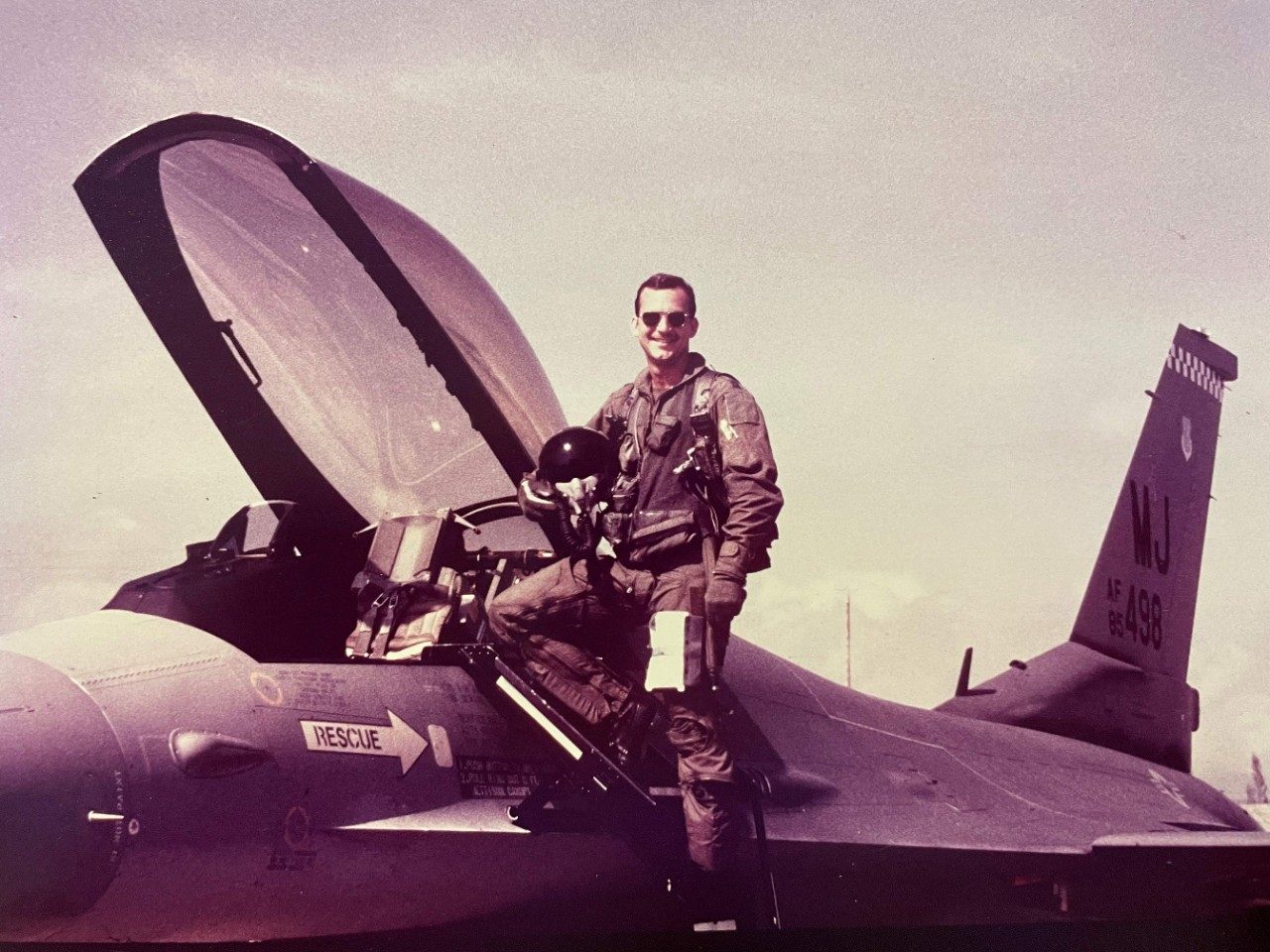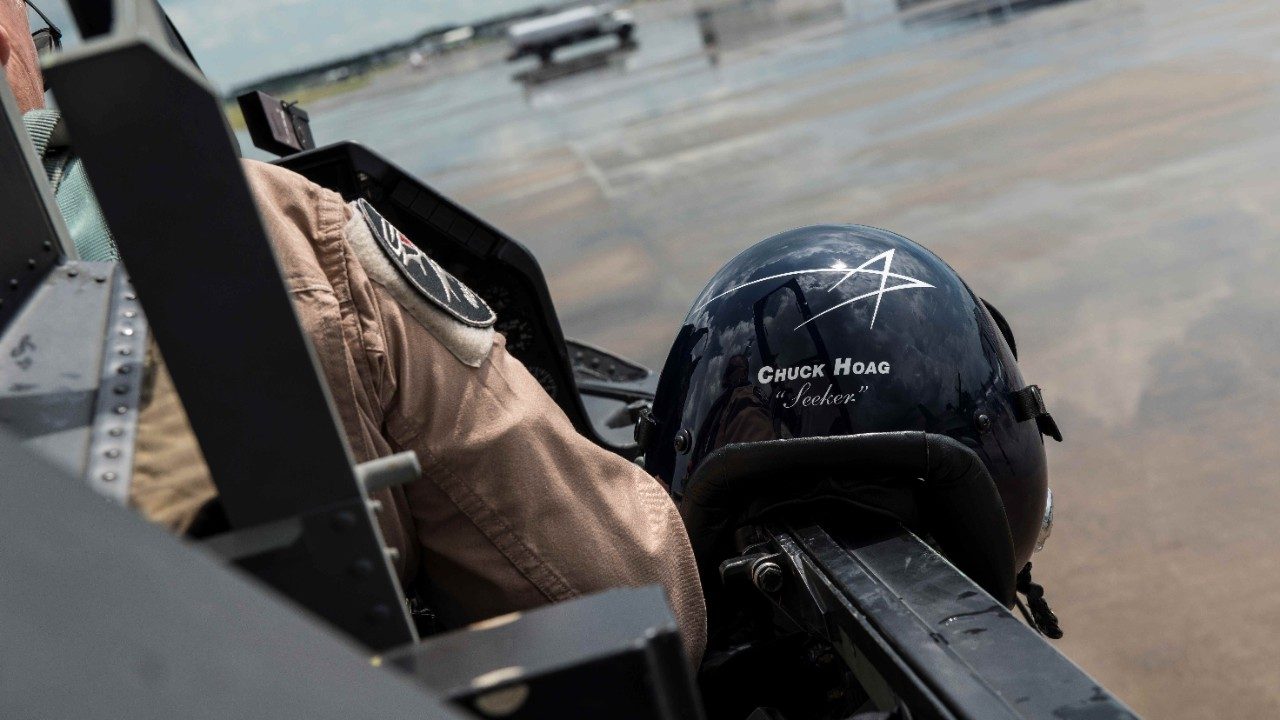4,600 F-16s and One Pilot Who’s Flown Nearly Every Version
Chuck “Seeker” Hoag’s experience with the F-16 includes both flying and teaching. As a pilot and pilot instructor for the U.S. Air Force, the Air National Guard and Lockheed Martin, he has flown blocks 10 through 70 since 1987.
We interviewed Seeker to learn about the technology and safety upgrades he has seen throughout his nearly 6,000 flight hours and 35+ years in F-16s. As the F-16 program celebrates its 4,600th aircraft produced, Seeker’s insight shows what is being celebrated.
Q: How long have you been flying the F-16, and what inspired you?

Q. How have you seen the F-16 evolve in technology and capabilities?
Q. What features stand out to you the most in the newer blocks?
A. For avionics, we have displays that weren’t there in the earlier blocks, and the old analog technology is now digital. One example is the [MIL-]1553 bus traffic that evolved to being a fiber channel with an active network, and later Ethernet. The bandwidth is better, and you get answers faster. The AESA [active electronically scanned array] radar is another great example. Before, you could never have an AESA radar in an aircraft because it would overheat. You'd have to have a separate cooling system for it. Now, we don’t need that. With AESA, we can see farther and discern complex situations quicker. That way, we’re ready to fight when we get there.
Another improvement is the helmet-mounted display, which makes you more capable in the cockpit because it moves as you turn your head, taking the information wherever you go. With the older one, the HUD [head-up display], you had to be looking right at it to use it; it wasn’t always right in front of you. Also, today’s F-16’s weapons suite can handle more, so you’ve got a choice of more weapons to accomplish your mission: longer-range air-to-air missiles, AIM-120s, AIM-9s and -9Xs.
For the engine, we’ve got increased reliability and less maintenance. If the engine gives up and says, “Hey, you got it,” it’s done probably 10 or 12 things on its own before you get to it. Also, thrust has gone up substantially. As the blocks keep getting higher, the airplane’s weight goes up with all the added technology, and more thrust is needed to keep the airplane maneuverable. Todays Improved engines get the most they can out of the mass flow for the size intake and the exhaust nozzle.

Q. Throughout your decades of multinational F-16 instruction, what have you observed in international cooperation?
A. International cooperation and [U.S.] allies are the key to success. Having the F-16 platform out there everywhere — the logistics of it, the weapons that are available, the commonality between the variants and blocks — when you work with an international partner with the same equipment, it’s a lot easier. Our partners have recognized what an F-16 can do, and from what I’ve witnessed, they all love the airplane.
My first [international] F-16 assignment was over in Misawa, Japan, as a pilot instructor within a squadron. Then, I taught at MacDill [Air Force Base], Florida, and then the Air National Guard [Base] at Tucson, Arizona. That’s where the international school for F-16s is. My work there was very enlightening because I got to see other countries’ different ideas, and it opened up my field of view and showed me new ways of doing things and new possibilities. That’s one way that partnerships with our allies enhance our ability to do our own job.
The same applied when I was teaching abroad. I got to see what other countries do with the equipment they have, and then come back and incorporate some of those ideas into day-to-day operations States-side. Also, just seeing how other countries handle defense, and how impressively they do it, I feel honored to be part of that.

Q: What are the most important things to know about flying an F-16?
A. First, don’t be a child of the green. And what that means is, take a wide field of view. Back in the Block 10, we had a very small green HUD, and everybody would stare at that instead of looking inside the cockpit or outside the window. That’s how this expression came about, and it’s stuck for nearly 40 years.
Second, remember that you’re always one switch, one dobber or one display away from the right one. What that means is you’ve got to know your system. Learn it like your life depends on it. Know where to go to get the information you need in the most efficient manner possible.
Third, “CZ is your friend.” Use cursor zero, or “CZ,” when you need to. When things get complicated, it’s like a reset button when you get turned around while slewing things.
If you can apply those three things, you’ll be a great F-16 pilot.




